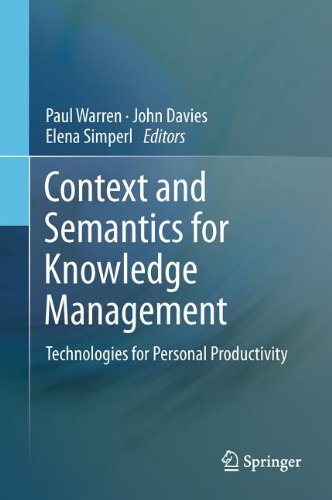

Most ebook files are in PDF format, so you can easily read them using various software such as Foxit Reader or directly on the Google Chrome browser.
Some ebook files are released by publishers in other formats such as .awz, .mobi, .epub, .fb2, etc. You may need to install specific software to read these formats on mobile/PC, such as Calibre.
Please read the tutorial at this link: https://ebookbell.com/faq
We offer FREE conversion to the popular formats you request; however, this may take some time. Therefore, right after payment, please email us, and we will try to provide the service as quickly as possible.
For some exceptional file formats or broken links (if any), please refrain from opening any disputes. Instead, email us first, and we will try to assist within a maximum of 6 hours.
EbookBell Team

4.1
60 reviewsKnowledge and information are among the biggest assets of enterprises and organizations. However, efficiently managing, maintaining, accessing, and reusing this intangible treasure is difficult. Information overload makes it difficult to focus on the information that really matters; the fact that much corporate knowledge only resides in employees’ heads seriously hampers reuse.
The work described in this book is motivated by the need to increase the productivity of knowledge work. Based on results from the EU-funded ACTIVE project and complemented by recent related results from other researchers, the application of three approaches is presented: the synergy of Web 2.0 and semantic technology; context-based information delivery; and the use of technology to support informal user processes. The contributions are organized in five parts. Part I comprises a general introduction and a description of the opportunities and challenges faced by organizations in exploiting Web 2.0 capabilities. Part II looks at the technologies, and also some methodologies, developed in ACTIVE. Part III describes how these technologies have been evaluated in three case studies within the project. Part IV starts with a chapter describing the principal market trends for knowledge management solutions, and then includes a number of chapters describing work complementary to ACTIVE. Finally, Part V draws conclusions and indicates further areas for research.
Overall, this book mainly aims at researchers in academia and industry looking for a state-of-the-art overview of the use of semantic and Web 2.0 technologies for knowledge management and personal productivity. Practitioners in industry will also benefit, in particular from the case studies which highlight cutting-edge applications in these fields.